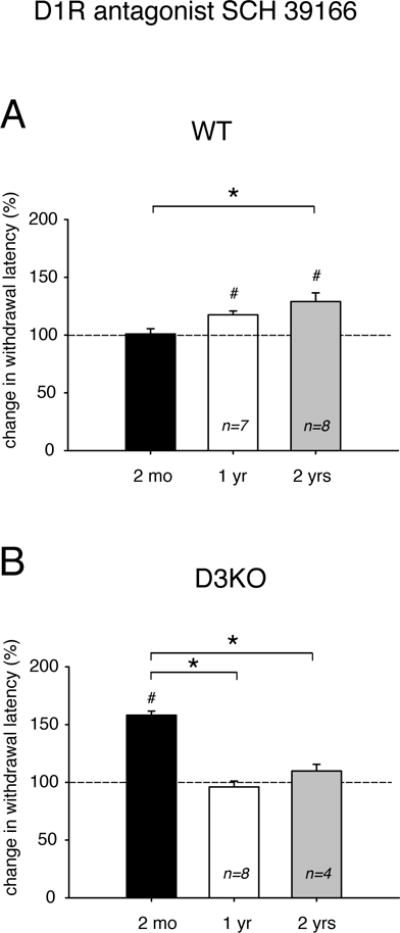Figure 3.

Effects of the D1R antagonist, SCH 39166, on thermal pain withdrawal latencies in differently aged WT and D3KO. Displayed data represent changes in withdrawal latency compared to respective control vehicle injections, with dashed lines representing relative vehicle control levels. A. WT animals. The D3R antagonist SCH 39166 had no modulatory effect in 2 month-old animals, but increased withdrawal latencies significantly at 1 year and 2 years. The difference between 2 months and 2 years is significant. B. D3KO animals. Unlike WT, SCH 39166 strongly and significantly increased thermal pain withdrawal latencies in 2 month-old animals, but had no effect at 1 year or 2 years. The difference between 2 months and 1 year, and 2 months and 2 years is significant. Abbreviations as in Figure 1. *: denotes significant difference between groups; #: denotes significant difference from vehicle control (dashed line).
